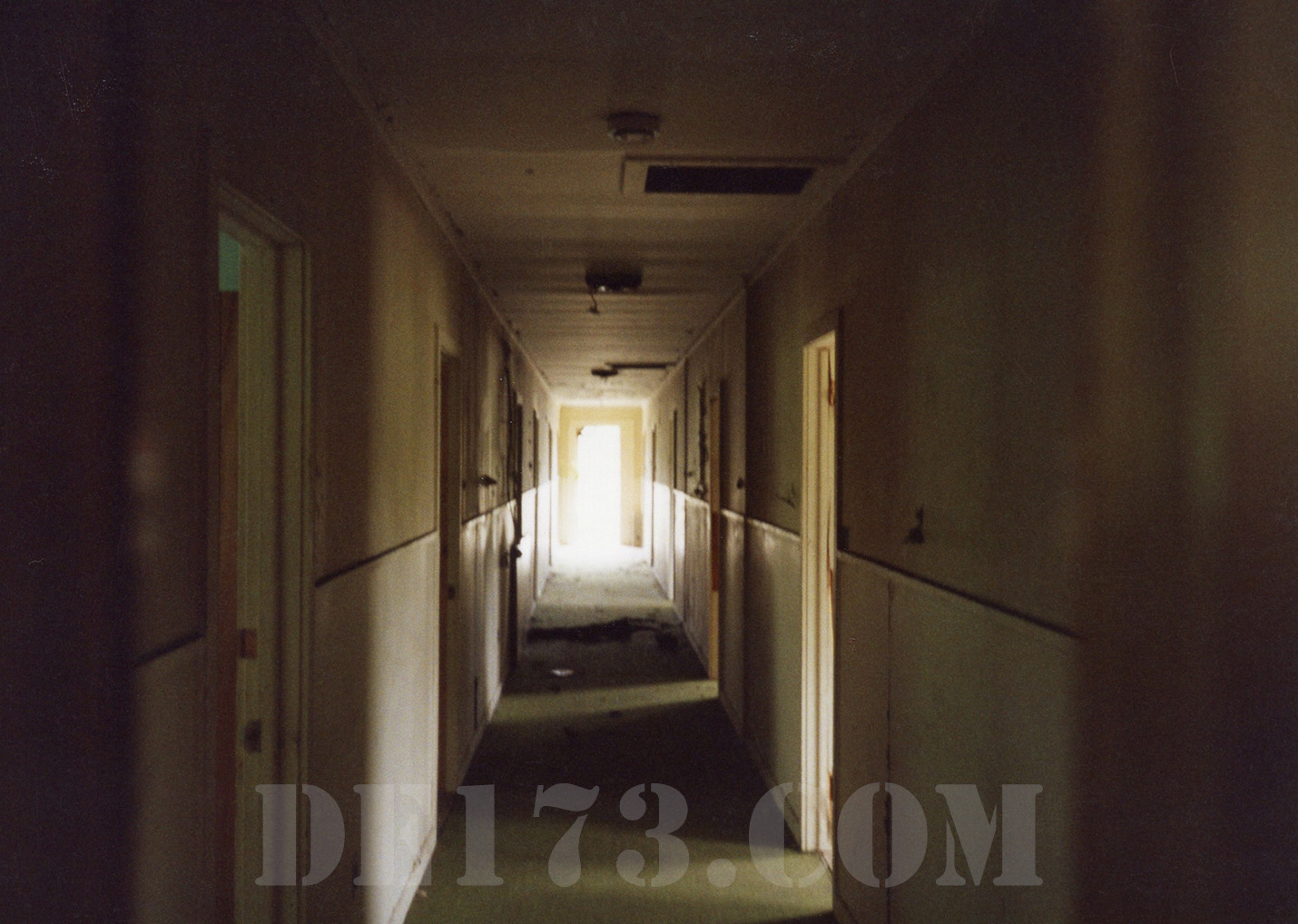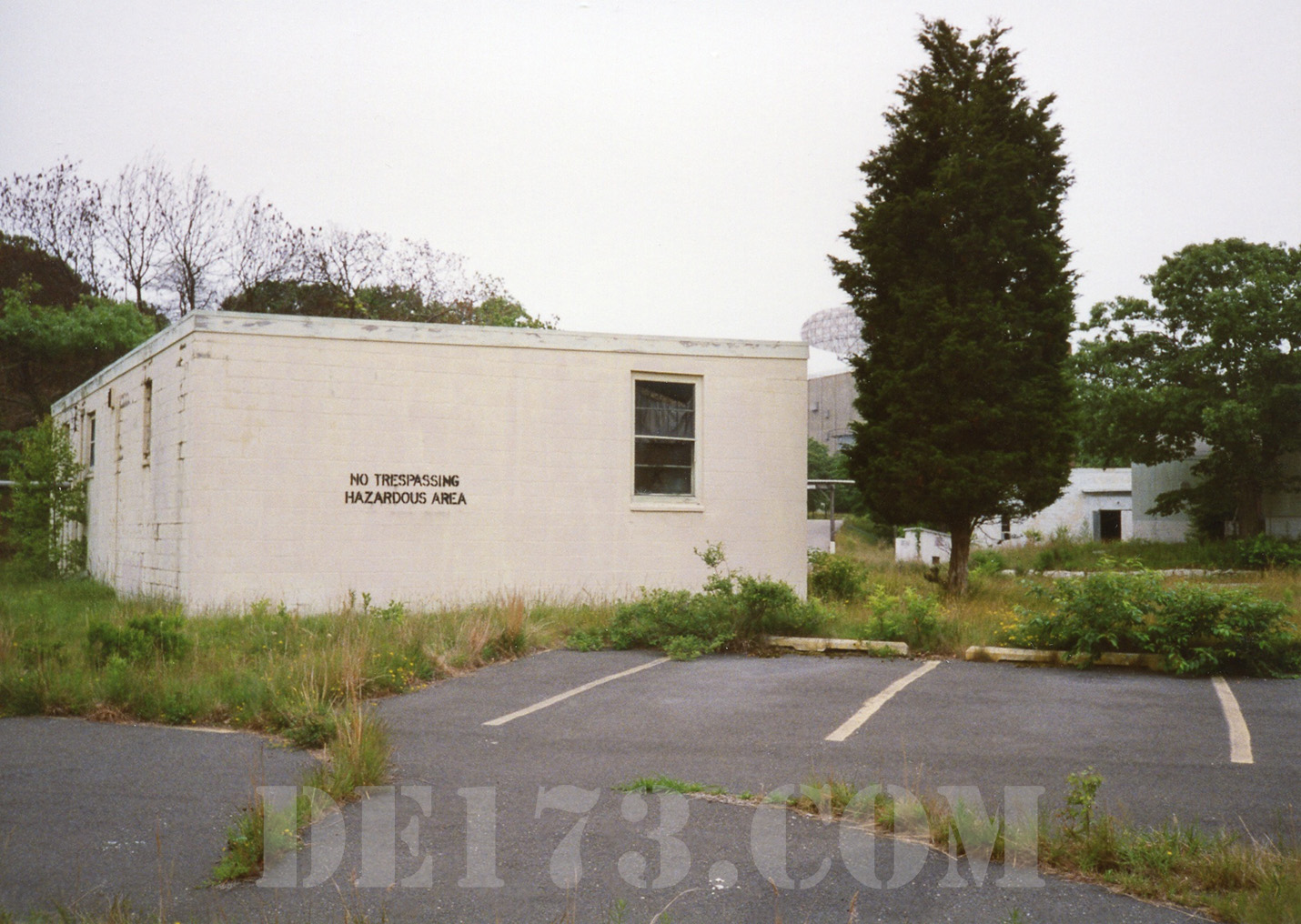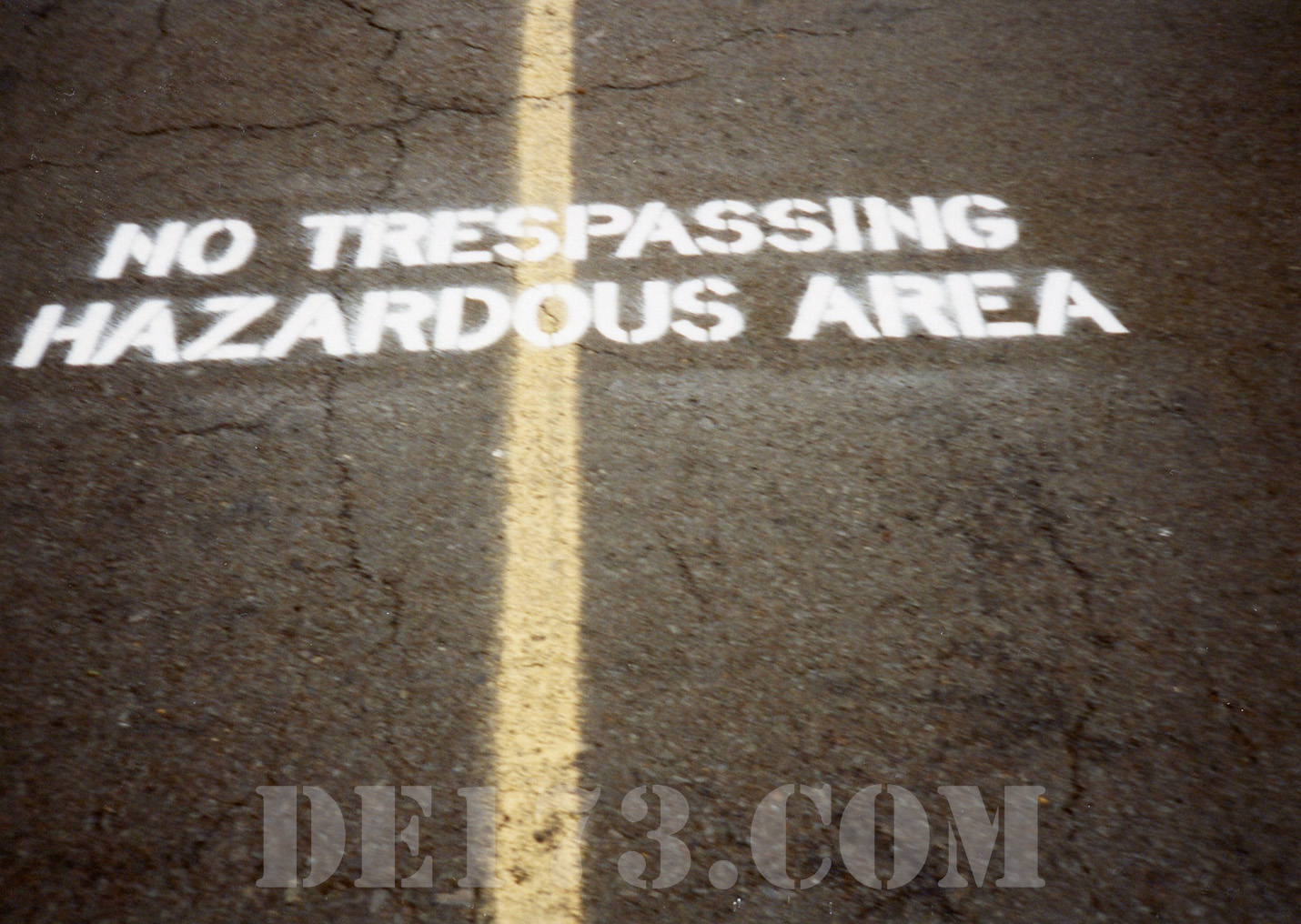
Evaluating A Lanurinth
Now that we have summarized this maze of a story as depicted in the video and the three characters in it, we will give a few of our observations on it, aside from its obvious astounding content and implications.
The Truth About the Philadelphia Experiment video consists of Nichols, Bielek and Cameron telling their tales, with audience question and answer and a “slide show” portraying their recent visit to the Decaying Montauk base. The video is over three hours long. It covers the PX, Projects Phoenix I, II, and III (names for various stages of the PX, Montauk project and their spin-offs.) It is beyond no-budget (a hanging bed sheet for a slide projector screen, video titles misspelled and mislabelled, slides in backwards and not organized, etc.) and the camera work is home-grown to say the least. Virtually nothing is set up or professionally prepared.
The stories they tell in the video are of course fascinating, even plausible – at first – especially if, like one of your authors (Andersen), you grew up on eastern Long Island and places like Montauk and Brookhaven Lab were practically in your backyard! But the stories get a little hard to believe when the trio starts to talk about time travel, age regression (yes, both Bielek and Cameron are way too young to have been sailors on the Eldridge,) extra-terrestrial aliens, and a 30ft monster (Preston named “Junior”) who wreaks havoc on the Montauk Base.
Also, although they tell their tales with complete sincerity and with an amazing amount of consistency between the three of them, there do seem to be some flaws in the story. With this in mind we would still recommend viewing the tape, if only for its spellbinding entertainment value. We ourselves have tried to listen to everything, no matter how bizarre, in the hopes that we might strain out a technological tidbit here and there. What we find mostly is a labyrinth of metaphysical techno-babble.
The group has produced a second video, The Montauk Project Tour, which was released in 1993 and is two hours long. In it, Nichols takes the viewer on a tour of the decaying Montauk Radar Base, as well as his home garage/workshop, which he calls “Space Time Labs.” Space Time labs offers the “psychotronic” community a collection of esoteric electronic gadgets designed to simulate the mind-probe chair allegedly used at Montauk, as well as devices to keep uninvited aliens at bay.
This video is as badly produced as the first one, but the background music is what really intrigues the viewer: Dirge-like, somber Wagner-esque music drones on as Nichols leads the viewer through underground ammunition-storage rooms at the abandoned Montauk base, informing us that this was where multitudes of blonde, Aryan-type boys and young men were imprisoned, “stark naked,” after having been kidnapped off the streets of the Long Island/New York City/Connecticut area! Remember the missing kids on the milk cartons? Many of these went to Montauk, says Nichols. The reason for these abductions was the need for experimental subjects and there is also a hint of a kind of a “hidden military agenda” in which the boys were brainwashed and recruited into a secret Nazi-like task force which was “sent about 150 years into the future, for what reason we haven’t ever been able to figure out.”
Indeed, one of the recurrent themes in the Preston Nichols story seems to be a Neo-Nazi-like undercurrent to the entire thing. The seeming preoccupation on the part of Nichols with young boys has also not gone unnoticed. One certainly hopes, in some bizarre sense, that these unbelievable tales are true, if only because, if they’re false, they show the twisted mind of their originator. A Stephen King he isn’t!
When one continues to publish such shocking material as Preston Nichols has been doing for several years now, one must expect to endure some searing analysis from one’s critical readers. Unfortunately, the tendency is to hide behind the “I know it is true and I don’t need to prove it to anybody” façade, a common trait of the mystical crowd.
Nichols’ other recent endeavours have been the co-authoring of two books, The Montauk Project: Experiments in Time and Montauk Revisited (along with publisher Peter Moon of Sky Books.) He is also co-publishing a quarterly newsletter, The Montauk Pulse, in which some of his wildest assertions can be found on a regular basis. We have no doubt that the Weekly World News and other “rag-mags” are missing out on an extraordinary talent by not offering Nichols a writing job.
Rick Anderson paid a visit to Preston Nichols at his home in November 1992, curious to see Space Time Labs and to ask 101 questions of the engineer who had built a Time Machine. Nichols was a friendly, talkative guy who seemed willing to show me around.
His “Labs” turned out to be a small garage or shed in the backyard of his East Islip, Long Island home. On top of the “Lab” sat the diamond-shaped Delta-T Antenna, shown in his book and claimed to affect the flow of time in its proximity. It is a wood-frame structure supporting several turns of insulated wire or coaxial cable, in three orthogonal loops. (The structure can be described as three mutually perpendicular square loops, with their corners touching; or as two base-to-base 4-sided pyramids.) Nichols claims that he was working on this antenna on the roof one day, when his “consciousness began shifting” into a psychic state due to the subtle influence of this antenna geometry on the local area. It was then that he had a flood of memories regarding part of his involvement with the Montauk Project; when I (Andersen) visited the site, he was merely using the antenna for his short wave radios inside the “lab.”
The “lab” itself consisted of a small anteroom furnished with two small couches, an chair, and a rack of equipment that resembled your basic home stereo system, with cassette tape deck, etc. The chair sat directly in front of this equipment and between two old vacuum tube amplifier/speaker boxes which served as the left and right stereo channels. Behind the chair and to the rear on either side were two smaller “speakers”; Preston later “hinted” that they were not really speakers but scalar magnetic generators of a sort. He invited me to sit in the chair and then announced that what I was about to experience was a small-scale version of the “Chair” that they had used as a thought-amplifier at Montauk. I couldn’t wait to try it.
Preston inserted a cassette tape of Swan Lake, followed by the Moody Blues classic Nights In White Satin, all the while telling me to “let go and flow with the music.” Nothing out of the ordinary was experienced until near the end of the song when I began to notice a peculiar “pressure” in the middle of my forehead and a slight headache developing. Just as I was thinking that something “psychotronic” was beginning to occur, Preston broke the spell by concluding that the pressure in the head was merely a sign that I was “resisting” the influence of his device and perhaps we should quit the experiment.
At this point I asked to see the rest of the lab. We went through the back door of this narrow anteroom into a tight, cluttered corridor lined with shelves holding the nicest collection of World War Two vintage radio equipment I’d ever seen. Tucked away in a corner was a five-foot tall Tesla coil. A radio collector’s delight, but certainly not a “laboratory.” I now asked to see what he had indicated that he was working on in the lab: a descendant of Nikola Tesla’s Zero Time Reference Generator, allegedly used as the synchronization device in later phases of the Philadelphia Experiment to “lock the time references” of the experiment and crew on board to the “galactic zero-time reference.”
Preston Nichols showed me the device: It was a Hewlett-Packard aircraft-VOR tester, which contained various toothed gears coupled to front-panel controls for adjusting the phase angle of the output signal. (A VOR, or Vhf OmniRange, is a radio transmitter that puts out two types of signal separated by a specific phase or time delay, enabling airplane pilots to zero in on an area; sort of an electronic “coordinate system” like a map, which a VOR receiver in the plane displays to the pilot.) The only thing the VOR system might have in common with the equipment allegedly used in the Philadelphia Experiment is that a VOR creates a rotating RF signal that continually sweeps around the directional circle, providing stable directional points for the pilot. If the PX really did use a rotating field, nobody has ever really explained why.
By now I had seen enough: Nichols had nothing to show but a lot of techno-paranormal stories. When I practically begged him to put out some detailed technical information on the Montauk and Philadelphia projects, he felt that “the audience would be too small” to make it worth his while. In other words, Nichols wants to write mystical/UFO/conspiracy fodder because he knows it will sell in the mystical/UFO/conspiracy community.
When he attempted to tell me on another occasion that a completely different type of aircraft navigational system, the Glide Slope system, was “essentially the same” as the VOR, I told him he was simply wrong, since I had researched both systems. Nichols then encouraged me to “correct” him wherever he was wrong, since he wanted to be as accurate as possible. It was at that moment that I decided that I didn’t want to be the unwitting “ghost-writer” of Preston Nichols’ forthcoming books, in which he could incorporate the updated technical information that I would have been doing the research on, in my effort to find out the truth, while he would be making money off the voracious appetite for constant titillation characteristic of the UFO/paranormal community.
So ended my brief correspondence with Preston Nichols. While I have nothing against him personally, I think his writing is of the “rag-mag” calibre, as I indicated earlier.
As for Al Bielek, a letter to him written in the fall of 1991 went unanswered. Bielek indicated at a lecture given at Rosemont College, PA, July 1991, which he was in the process of writing the definitive work on the technical details behind the Philadelphia Experiment. This also has not materialized, despite a book co-authored by him with Brad Steiger called The Philadelphia Experiment and Other UFO Conspiracies, which is the usual sensational anecdotal material.
We have not attempted to communicate with Duncan Cameron. Any desire to do that was squashed after we viewed the new Nichols video, The Montauk Tour, in which a near-nude (95+%) Cameron lies on the floor, enters a yoga-like trance, makes orgasmic grunts and movements, speaks in “tongues,” and then opens his eyes, looks directly at the camera, and says with a smile, “Well, that’s entertainment!”



